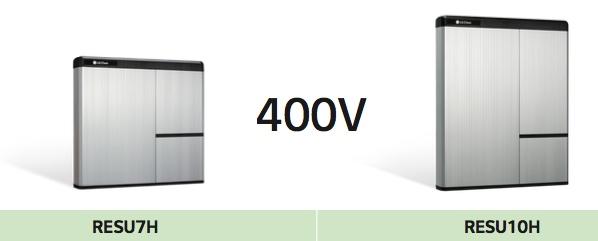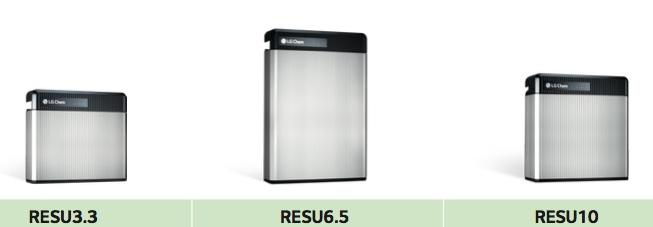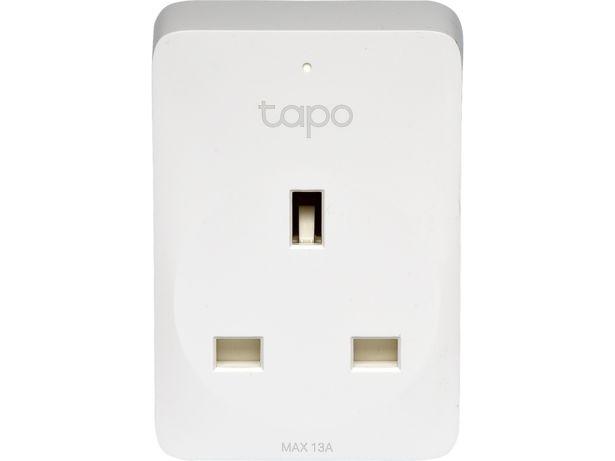New LG Chem RESU Batteries: Smaller, More Powerful And Cheaper Than A Powerwall
Smaller, cheaper, more powerful. LG Chem’s new batteries look very compelling compared to a Powerwall.
If you are in the market for a home battery and are tempted to buy a Powerwall, then I urge you to also consider the new range of LG Chem batteries announced last week.
Whilst LG have been unable to compete with Elon Musk for mainstream media coverage, the LG Chem RESU, or Residential Energy Storage Unit for the long winded, has been one of the biggest successes in on-grid home energy storage in Australia. While solid figures are hard to come by, it may have been used in almost half of all on-grid home battery installations.
While it was popular, ye olde RESU6.4 is no more. LG Chem has replaced it with something better. And not just with an updated version of itself, but with a whole slew of new RESU.
There are now 5 RESU systems to choose from with nominal capacities ranging from 3.3 to 9.8 kilowatt-hours.Three of the new RESU use 48 volt DC power:
The new 48V batteries
And two use around 400 volts (just like a Powerwall funnily enough):
LG’s new 400V batteries
The usable capacity of the lower voltage systems is around 90% of their nominal capacity and around 95% for the higher voltage ones.As they are lithium-ion battery systems, their capacity will gradually decline with use and over time.
The two different voltages allows for a wide range of installation options including DC coupling and AC coupling.No matter what type of coupling you prefer, you can do it with an LG Chem RESU.And they are suitable for on-grid or off-grid use.
The 48 volt RESUs have higher power than most comparable battery systems and are lighter and much more compact than the competition.They are warrantied to retain at least 60% of their nominal capacity for 10 years or until they have stored slightly under 2,500 kilowatt-hours for each kilowatt-hour of nominal capacity.Taking an estimate of battery degradation into account this is approximately 3,200 cycles.When cycled once per day it will take around 8 years and 9 months to reach that point.
The New RESUs’ Vital Statistics
In order to save me having to make a table, I have grabbed a screen shots off the new RESUs datasheets.Here are the vital statistics for the 48 Volt systems:
The vital statistics of the 48 Volt LG Chem RESU battery systems.
And here is information on the two RESU that LG Chem refers to as 400 volt systems:
The vital statistics of the two 400 volt LG Chem RESU battery systems.
Indoors Or Outdoors Installation Is Okay
The Enclosure Protection Rating of the RESUs is IP55 which means they are protected against both dust and water. But if dust and water combined their powers to make mud, well, it would be protected against that also. According it its rating it can handle being sprayed with water under moderate pressure from any direction but not immersion.So if you are going to use it on a submarine, try to remember to install it on the inside.
Maintenance Free
Like most new battery storage systems, apart from keeping them reasonably clean, RESU require no maintenance.
If you have an LG Chem battery NEVER do this to it
Round Trip Efficiency
LG Chem gives the round trip efficiency of the 48 volt RESUs as greater than 95%, but states this is only under good conditions.In real life I would expect its round trip efficiency to be a little under 95%, especially if it is installed outdoors and often exposed to temperatures above 30 degrees or below 15 degrees.
The efficiency of the higher voltage RESU will be lower because their built in DC converter will result in additional losses.But since the 48 volt RESUs will need DC conversion anyway, either from a multimode inverter or a separate DC converter, overall their efficiencies should be comparable.
Operating Temperature is -10 to 45 Degrees Celsius
One important piece of information missing from the above tables is its operating temperature.RESUs can function at ambient temperatures from -10 to 45 degrees Celsius.Ambient simply means the air temperature in the immediate surroundings.It is possible that some day we may know why battery manufacturers don’t just say, “local air temperature”.
The lower limit is not likely to be a problem for Australians, but it is possible for it to shut down during a severe heatwave.To prevent it conking out from heat exhaustion, installing RESUs out of direct sunlight is a very good idea.LG Chem gives its recommended operating temperature as 15-30 degrees, so placing it indoors is probably a good idea and will help improve its efficiency and extend its battery life.
It’s Quiet
The RESUs have no cooling fan and rely on natural convection from its metal case for cooling.This means they are very quiet, which is useful for indoor installation.
Fire Safety!
LG Chem claim that their method of producing battery packs makes theirs the safest lithium-ion battery on the market.I am inclined to believe them.So far, I am not aware of any RESU installed in Australia having safety issues, but since only around 1,000 or so may be installed in Australia at the moment, only time will tell.
If you are the type of fearless daredevil who leaves a charging laptop unattended on a wooden desk covered in papers, then you are clearly a risk taker who is not going to be worried about installing a lithium-ion battery system.Possibly because they realize how utterly reckless and immune to fear the average Australian is, LG Chem recommends installing RESUs away from flammable materials.
Nominal Battery Capacity
The nominal battery capacity is the total amount of energy the battery can hold.Because completely draining the battery is bad for its lifespan, the usable storage capacity for the three 48 volt RESUs is limited to around 90% of their nominal capacity and for the two higher voltage RESUs it is around 95%.This usable storage capacity will decline over time as the battery is used and will also slowly decline even if it isn’t used.So the moral is, use it or lose it, but using it also causes it to lose it.
Battery Capacity And Names
LG Chem does a good job of matching the names of their RESUs to their nominal capacities 3 times out of 5.

They start off well, as the numbers in the names of the RESU3.3, RESU6.5, and RESU7H all match their nominal storage capacities.Unfortunately someone must have stamped the names on the RESU10 and RESU10H before they figured out how many battery cells they could actually fit inside them, because they both only have a nominal capacity of 9.8 kilowatt-hours.
This is a surprising oversight given the care LG Chem appears to have taken with the rest of the product.I suppose it could just be a marketing decision because they decided a RESU10 would sell better than a RESU9.8 but that’s just nuts.How does forcing me to tell everyone you can’t trust the numbers LG Chem puts on their products help their marketing?
For More Storage Connect Two 48 Volt RESUs
An adapter is available that allows any two 48 volt RESU systems to be connected together.So if you wanted you could slap together a RESU10 and a RESU3.3.Although I strongly suggest using the adapter rather than just slapping them against each other.This means the usable storage capacity available to a household from the new systems will range from 2.9 kilowatt-hours with a single RESU3.3 to 17.6 kilowatt-hours from a doubled up RESU10.
RESUs Are High Power Battery Systems
The new RESUs have a lot of power.The “Max Power” figures on the datasheet tables above are the amount of continuous power they can supply when new.
For on-grid applications higher power improves the economics of battery storage as households will need to draw on grid power less often during the day when electricity consumption exceeds rooftop solar production.It also allows households on time-of-use tariffs to more easily use all the available stored energy during peak periods when grid electricity prices are high.
For off-grid applications, higher power allows more appliances to be operated at once without tripping the system.
LG Chem says using RESU at only half their continuous power output level will extend their battery life.In practice most households are likely to use them at an average well below their continuous power output.
The amount of power a RESU can supply will often be limited by the power conversion device (i.e. battery inverter/hybrid inverter/DC-DC Converter) it is used with.Some popular battery inverters only allow 2.5 kilowatts of power, which is 83% of a RESU3.3’s continuous power output and 60% of a RESU6.5’s.
RESUs Have Plenty Of Installation Options
There are plenty of options available when it comes to installing RESU.Currently there are 8 compatible mulitmode inverters available that can be used with the 48 volt RESUs and 2 suitable for use with the 400 volt RESUs.
The 48 volt RESUs could be installed without a compatible inverter by using a DC converter such as the Goodwe GW2500-BP.This is suitable for a rooftop solar system with a string inverter and panels wired up so they produce under 500 volts.The GW2500-BP can only provide 2.5 kilowatts of power, so even the smallest RESU can’t be used at full continuous power when installed this way.
The 400 volt RESUs can also be installed without a compatible inverter by using a battery-inverter.An example of one of these is the Sunny Boy Storage.This particular battery-inverter will also limit the RESU to 2.5 kilowatts of power.
The Most Compact Battery Systems Available
LG claims the RESUs are the most compact and energy dense battery systems available and I believe them.The RESU6.5 takes up less space than my microwave oven while only being 12 centimeters thick which makes it very easy to find room to install it.At 52kg it is not exactly light, but it is lighter per kilowatt-hour than all the other battery systems out there.Much lighter in some cases.
If you are short of space, a RESU is an excellent choice.It also makes it easy to install inside which can help extend its life by avoiding high temperatures.Unless perhaps your house is an oven in the summer.
LG Chem Battery Technology
Lithium-ion battery cells are very thin and are manufactured in long ribbons.Because enormously broad but extremely thin and thus fragile batteries aren’t very practical, there are three methods used to make them more manageable.
The first is to roll them intocylinders and this type can be found in power tools, Tesla cars, and laptops1.Their drawback is whenever you stack cylinders together there will be spaces left between them.
Cells can also be folded into a flat rectangular shape like a long scarf.This reduces but does not eliminate the amount of dead space.
Unfortunately both rolled and folded cells can distort over time due do expansion and contraction caused by changes in temperature and this can affect their performance.
LG uses the third method, which they call lamination and stacking, where they don’t roll or fold but cut the cells into sheets and stack them flat on top of each other.This eliminates dead space and minimizes distortion, contributing to energy density and battery life.
Here is an LG Chem video of their batteries being made by robots.With all that automation, now is clearly not a good time to get a job in a battery factory, despite rapid expansion in capacity.
Warranty And Battery Degradation
No matter how they are made, lithium-ion batteries degrade with use and slowly decay even when not used.The RESU warranty, while better than some others, reflects this.
The 48 volt RESUs’ warranty promises they will still have at least 60% of their nominal capacity after 10 years or until they have stored a total amount of electricity just under 2,500 kilowatt-hours for every kilowatt-hour of nominal capacity.This comes to:
If your RESU cannot keep its capacity up, then LG will repair or replace it.If they no longer produce RESUS they have the option of compensating you with cash.Unfortunately, the amount of money they offer can be pretty insignificant and depends upon the age of your system:
Does LG Chem has a very low opinion of its own storage technology once it is more than a few years old?I mean, I expect energy storage to fall in cost over time, but in nine years’ time you are not going to be able to buy a replacement with just 2% of a RESU’s current price.
Number Of Cycles Until End Of Warranty
A new RESU6.5 can provide 5.9 kilowatt-hours of stored electricity each cycle.But this capacity will slowly decrease.Because the 60% of capacity in its warranty is a minimum, I am going to assume that once it has provided the 16,100 kilowatt-hours of storage its warranty covers its capacity will average 65%.
I will also assume the fall in its capacity will be linear.This means the average cycle will be 5.06 kilowatt-hours.If the RESU6.5 is cycled once per day it will take 3,180 cycles to reach the end of its warranty.
If it is cycled once per day that comes to under 8 years and 9 months. The number of cycles required to reach the end of warranty for the RESU3.3 and RESU10 are very similar, as is the amount of time if cycled once per day.
LG Resu Price
I have a list of estimated retail prices for the 48 volt RESUs.I will keep the identity of my source to myself in case they turn out to be wrong, but it is not a shady source.It is actually a sunny source and so I have confidence in the estimates which, including GST, are:
As the RESU6.4 was around $7,500 this makes the RESU6.5 about 13% cheaper per kilowatt-hour of nominal storage.
Note this is just the retail price of the battery and not the installed cost, which will be considerably more.A fully installed RESU6.5 with the ability to be used for back up power during a blackout could easily cost over $14,000.
RESU Cannot Pay For Themselves
Unfortunately like all home batteries, even under ideal circumstances, RESUs cannot pay for themselves when used for on-grid storage.
While battery storage is gradually clawing its way towards breaking even, even under ideal circumstances it can’t manage it yet after the total cost of installation, the foregone solar feed-in tariff, and cost of capital are considered. I will consider each of these to make a very optimistic estimate of the total cost per stored kilowatt-hour for a RESU6.5.
Estimated RESU Lifespan
A RESU6.5 is warrantied to provide 16,100 kilowatt-hours of stored electricity while retaining at least 60% of nominal capacity. If it has 65% capacity by the time it reaches this point and it is cycled once per day, it will take a little under 8 years and nine months to reach the end of its warranty.
I am going to assume the RESU will provide a total of 50% more storage than its warranty covers over its lifetime while losing capacity at the same rate.This means it will have 57% of its nominal capacity when it finally stops working after a total of nearly 14 years and 10 months after having stored a total of 24,150 kilowatt-hours.
Foregone Feed-in Tariff
If a household stores solar electricity for later use they forgo the solar feed-in tariff they would have received if they had sent it into the grid.Feed-in tariffs for new solar are now low and typically range from 5-10 cents.If a household has a feed-in tariff of 6 cents, after efficiency losses are accounted for, they will lose around 7 cents per kilowatt-hour stored.
Cost Of Capital
Because the money spent on a battery system could have instead been used to pay off debt or invested , the cost of capital has to be included and working this out can get very complex.
To keep things simple, I will determine how much interest the cost of the installed battery system would have earned if it had been invested at a 1% real interest rate. I will then divide the total interest by the total number of stored kilowatt-hours to determine the cost per kilowatt-hour.And that’s all I will do.It is a very basic approach. A real interest rate is what’s left after the effects of inflation are accounted for. If you have money sitting in a term deposit in the bank at the moment, then after inflation, you are currently earning a real interest rate of about 1%.
Most people don’t have money sitting in the bank they can use to purchase a battery storage system and so should use a higher interest rate, but as far as capital costs are concerned I am going to make this a best case scenario and use 1%.
I am going to assume the total cost of an installed RESU6.5 is $10,000.It may not be possible to get one installed that cheaply at the moment, but I am being optimistic.
If the RESU6.5 lasts for almost 14 years and 10 months then the interest that could have been earned at a rate of 1% comes to around $1,660.Dividing that by the 24,150 kilowatt-hours it is expected to store over its lifetime, the cost of capital alone comes to 7 cents per kilowatt-hour.
Total Cost Of RESU6.5 Storage Per Kilowatt-Hour
Using the optimistic estimate of $10,000 for the cost of installation and dividing it by the number of kilowatt-hours stored over its lifetime gives 41 cents.Adding 7 cents for the forgone feed-in tariff brings it up to 48 cents.And adding 7 cents for the cost of capital brings the total to 55 cents.Since this is much higher than the cost of grid electricity, a RESU6.5 installed for $10,000 cannot pay for itself even using optimistic assumptions.
An Optimistic Break Even Point
Currently some people on time-of-use tariffs pay 45 cents per kilowatt-hour during peak periods.If they were able to use all their stored electricity during these peak periods, which is unlikely, then with the assumptions used above they would be able to save money using a RESU6.5 if the total installed cost was around $7,500 or less.
But households that could use all the stored electricity during peak periods would be extremely rare and the cost of electricity during peak periods is likely to fall as more people install battery storage.
A Quality Lithium-Ion Battery System
LG Chem RESUs won’t save people money when used on-grid at their current installed cost.But they are also suitable for off-grid and I can see many people choosing them over lead-acid batteries for their compact size, maintenance free operation, and a warranty that can last for up to 10 years2.
As the LG Chem RESU now has a proven track record in Australia and is available from hundreds of installers, I’m sure many people will choose it over other battery systems. And if they can live without the TESLA logo on their wall, they may even choose it over a Powerwall.



